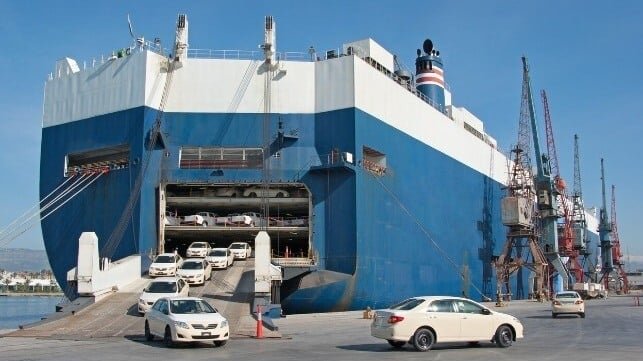The Impact of U.S. Tariffs on Ro-Ro Cargo at Major Ports
The roller-coaster ride of U.S. tariffs has become very taxing in more ways than one as manufacturers, consumers, shippers, and port directors alike wonder what’s next.
Manufacturers are scratching their heads on exactly how production schedules should proceed, not knowing if consumers will pick up the extra tariff costs added to a new Barbie doll or an electric appliance.
Automobile parts and cars made outside of the U.S. have been hit hard by the extra costs. Parts and automobile imports into the U.S. are faced with a 25 percent tariff, although there are exceptions to parts and vehicles that meet the requirements of the U.S.-Mexico-Canada Agreement.
Monitoring Impacts
U.S. ports are feeling the trickle-down effects of tariffs. Port of Baltimore, which handled 749,799 light trucks and cars in 2024, is closely monitoring developments. Port spokesperson Richard Scher notes the impacts on auto manufacturing customers and the decisions shippers are making regarding import fees and tariffs.
Port Hueneme in California and Port Everglades in Florida are also closely monitoring the implementation of tariffs to assess their effects on ro-ro cargo. Port Everglades has seen a 27 percent year-over-year increase in ro-ro cargo from October 2024 to March 2025.
Wait and See
Port directors, such as Rodger Rees at Galveston Wharves, are taking a wait-and-see approach to assess the impact of tariffs on cargo volumes. Galveston imports new cars, heavy equipment, and general breakbulk, largely from the E.U., England, and Mexico.
West Coast Powerhouse
Port of San Diego is a key player in ro-ro cargo, processing approximately 362,000 vehicles at its National City Marine Terminal. Structural repairs and infrastructure updates are underway to enhance cargo movement at the port.
Florida Powerhouse
Port Everglades continues to see growth in ro-ro cargo, with a focus on economic impact and community benefits. The port remains optimistic about the future growth of its cargo customers.
Automotive Gateway
Port of Hueneme has established itself as an important automotive gateway to the U.S. West Coast, with a core focus on ro-ro business and environmental sustainability. The port’s modernization plan includes a Green Automotive Shipping Corridor and shore power projects to reduce emissions.
As a premier automotive gateway on the West Coast, the port of Hueneme remains committed to the continued growth of ro-ro cargo through strategic modernization and sustainability initiatives. Investments in infrastructure and sustainability initiatives position the port to navigate future challenges and drive economic and environmental benefits for the region.
The opinions expressed herein are the author’s and not necessarily those of The Maritime Executive.

